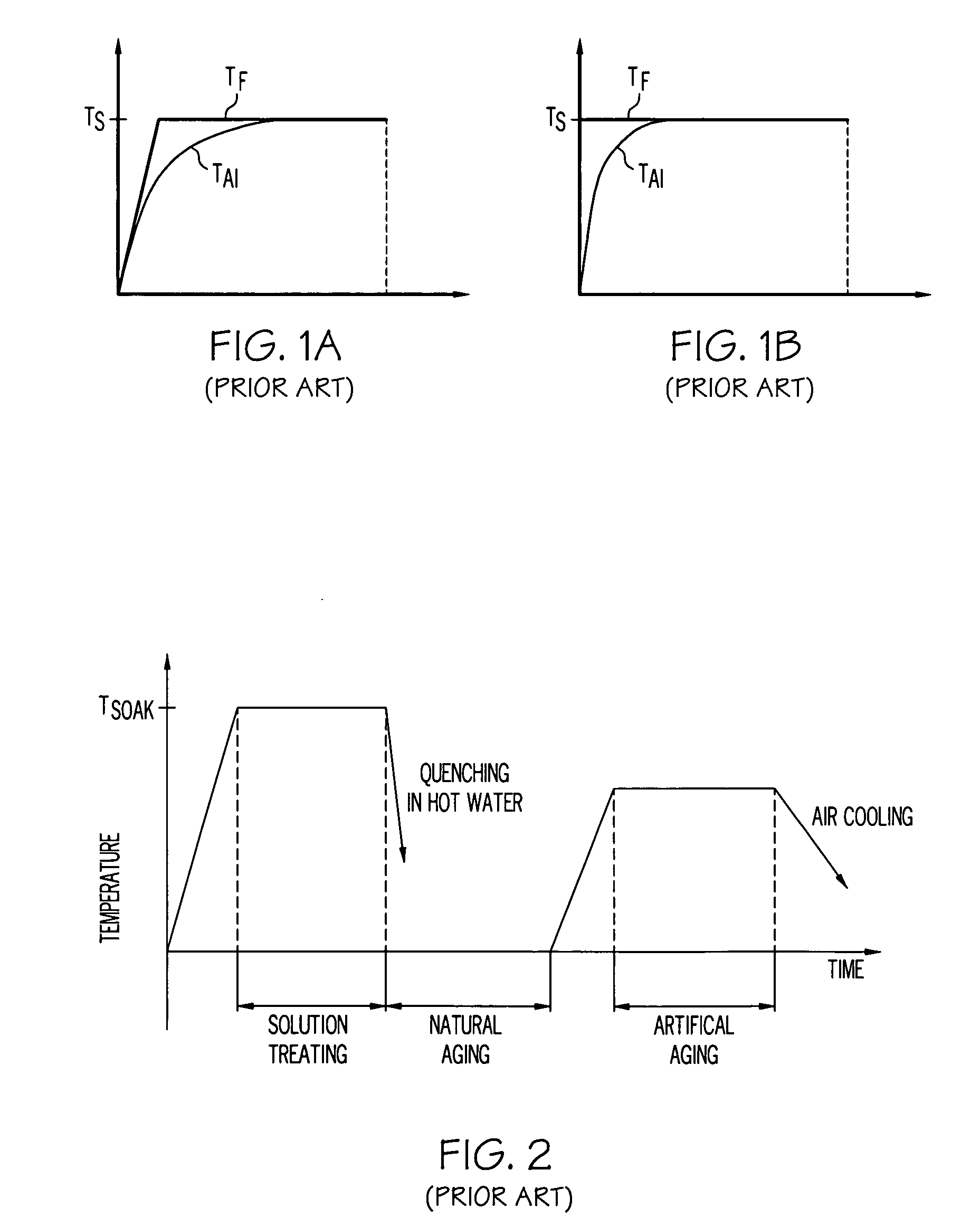Accelerated solution treatment process for aluminum alloys
- Summary
- Abstract
- Description
- Claims
- Application Information
AI Technical Summary
Benefits of technology
Problems solved by technology
Method used
Image
Examples
Embodiment Construction
[0027]Referring initially to FIGS. 3A and 3B, rapid heating is used to attain an initial furnace or heating media temperature TiF (also referred to as initial temperature profile) that is higher than a soaking temperature TS used in the traditional solution treatment. As shown with particularity in FIG. 3A, this can be used to simultaneously heat the furnace and the aluminum alloy contained therein in a batch process (where the temperature inside the furnace is brought up each time a new batch of aluminum alloy material is introduced), while as shown with particularity in FIG. 3B, it can also be used to establish an initial furnace temperature in a continuous process (where the temperature inside the furnace is always kept at an elevated level). Also as shown in both the batch and continuous processes, the soaking temperature is still lower than the melting point TM of the material. In the present context, the heating media may be sand, stainless steel or related media used in the f...
PUM
| Property | Measurement | Unit |
|---|---|---|
| Temperature | aaaaa | aaaaa |
| Mechanical properties | aaaaa | aaaaa |
| Melting point | aaaaa | aaaaa |
Abstract
Description
Claims
Application Information
 Login to View More
Login to View More - R&D
- Intellectual Property
- Life Sciences
- Materials
- Tech Scout
- Unparalleled Data Quality
- Higher Quality Content
- 60% Fewer Hallucinations
Browse by: Latest US Patents, China's latest patents, Technical Efficacy Thesaurus, Application Domain, Technology Topic, Popular Technical Reports.
© 2025 PatSnap. All rights reserved.Legal|Privacy policy|Modern Slavery Act Transparency Statement|Sitemap|About US| Contact US: help@patsnap.com



